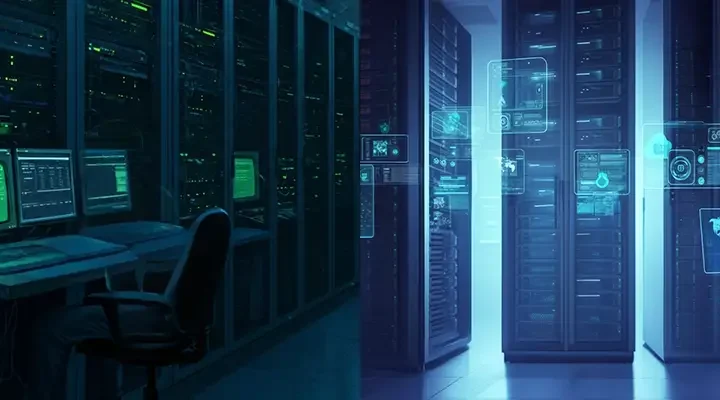
CA 2E (Synon), a development tool from the 1980s, has been a cornerstone for businesses using IBM i systems to generate RPG and COBOL code. However, its age and limitations are becoming significant issues. A major challenge is the retirement of seasoned professionals who know how to maintain these systems, leading to a talent shortage that increases operational costs and stifles innovation. Organizations are now at a crossroads to choose between sticking with outdated systems or investing in expensive modernization.
Gartner’s advice to move away from RPG highlights the urgent need for companies to proactively tackle these challenges and prioritize IT modernization more than ever due to the tangible impacts of this aging technology. The real-world impacts of aging technology require organizations to strategize and prioritize their IT modernization initiatives more than ever before.
The Decline of Synon
- Market Share: Synon constitutes less than 1% of the market share in IBM i environments, dwarfed by the 80% of companies that code directly in RPG and 20% that code directly in COBOL.
- Technological Support: IBM’s announcement to cease PL/I support in future OS versions (7.6 and beyond) directly impacts Synon, as some of its components rely on PL/I runtime.
- Sustainability Concerns: Synon has changed hands several times, from Computer Associates to Broadcom, leading to doubts about its long-term viability and support.
Is Synon Dead?
While Synon isn’t dead, it is on life support. The technology is aging, and its green screen interface is outdated and not user-friendly for new employees, which raises concerns about its sustainability. Companies must proactively plan their transition to avoid future complications and potential SOX compliance issues, as unsupported technology poses significant business risks.
Organizations that continue to rely on Synon expose themselves to several critical risks. Potential compliance risks make it difficult to meet regulatory requirements, and outdated systems can lead to operational inefficiencies, security vulnerabilities, and performance degradation. The inability to integrate with modern technologies can also leave companies at a competitive disadvantage. It’s essential to address these CA 2E (Synon) risks to maintain operational efficiency and ensure long-term business success.

Modernization Options: Build vs. Buy
To modernize Synon-based applications, there are three primary options: replace with a package, rewrite the application, or transform it with a tool-based approach.
Replace with a Package
What is it? To replace a legacy Synon application with a commercial off-the-shelf software package involves adopting a pre-built software solution that aims to fulfill the same business functions as your current system. This approach requires you to select a package that closely matches your business needs and customize it as necessary.
Pros:
- Access to modern features and best practices.
- Potentially faster implementation of standard functionalities.
Cons:
- Functional Gaps: Off-the-shelf packages often meet only about 70% of an organization’s specific needs, requiring significant customizations.
- Disruption: Employees must adapt to new workflows, causing operational disruptions.
- Cost: High initial costs and ongoing maintenance fees.
- Time: Implementation can take 3-8 years, leading to project fatigue.
Rewrite the Application
What is it? A rewrite of your application involves the development of a new system from scratch, using modern programming languages and architectures. This approach starts with gathering requirements, followed by designing, coding, testing, and deploying the new application.
Pros:
- Complete control over functionality and customization.
- Modern, streamlined codebase.
Cons:
- High Risk of Failure: Rewrites have a 49% failure rate, with only 4% being on time and on budget.
- Cost and Time: Rewrites are the most expensive option, typically taking 5-10 years and substantial financial investment.
- Scope Creep: The potential for continuous changes and requirement adjustments can delay the project indefinitely.
Tool-Based Transformation (The Fresche Approach)
What is it? Tool-based transformation leverages automated tools to convert your current Synon code into a modern programming language like Java. This method preserves your current business logic and workflows while updating the underlying technology and providing a modern UI.
Pros:
- Least Disruptive: Minimal changes for end-users, retains current workflows and business logic and deploys incrementally.
- Cost-Effective: Approximately 25% of the cost of a rewrite.
- Speed: Faster implementation compared to rewrites and packages.
- Predictability: Automated tools minimize human error and ensure a smooth transition.
- Future-Proof: Transformed applications are in modern languages like Java to ensure ease of maintenance and scalability.
Cons:
- Initial Investment: While less expensive than other methods, there is still an upfront cost.
- Dependent on Tool Capabilities: The success of the transformation depends on the robustness of the tools used.
Why Choose a Tool-Based Approach?
Fresche’s approach focuses on the preservation of valuable business logic and customization embedded in your current Synon applications while transitioning to a modern, sustainable technology stack. Here’s how we do it:
Automated Transformation: We use our own proven solution, X-Modernize, to automatically convert your Synon code to Java, ensuring accuracy and consistency.
Incremental Migration: Our methodology allows for gradual, incremental changes, reducing disruption to your operations.
User Familiarity: We modernize your application UI to a modern web interface while keeping enough of the original screen layout to minimize retraining.
Cost Efficiency: Our solution is significantly cheaper than rewrites and packages, both in terms of initial investment and ongoing maintenance.
Innovation and Control: Post-transformation, your IT team can innovate and customize without relying on a vendor’s roadmap, giving you control over your application’s future. Additionally, there is no runtime license required, so you won’t incur any post project transformation software costs.
Look Ahead
The era of Synon is nearing its end, and businesses must act now to avoid the pitfalls of outdated technology. With a tool-based transformation approach, you can ensure a smooth, cost-effective, and future-proof transition that safeguards your business continuity and competitive edge.
Ready to modernize your Synon applications? Contact us today to learn more about our tool-based transformation solutions and how we can help future-proof your IT landscape. Plus, don’t miss our upcoming webinar series on Synon modernization, where our experts will delve deeper into strategies, real-world case studies, and best practices for a seamless transition.


